Nobody wants to get unwelcome emails. And nobody (probably) wants to send them either.
As a sender, you might wish to connect with people who are keen on your messages and simply want to hear from you. But first, you have to get permission to send them. And this is where permission-based email marketing comes in.
What is it exactly, and what are examples of such marketing emails? Read on to learn more.
What is permission based email marketing?
Permission-based email marketing (also called opt-in email marketing) is when businesses send emails only to people who say yes to getting them.
It’s important to always ensure people are okay with getting your emails, whether they say it out loud (explicit permission) or it’s just understood (implied consent).
The cornerstone of permission-based emails is:
➡️ collecting email addresses ethically
➡️ and ensuring recipients have given their consent, either explicitly or through implied consent.
And also, there are a few extra benefits. ⬇️
Why should you use permission based email marketing?
Being ethical pays off here. In addition to being compliant with laws, there are some benefits you can earn:
Higher conversion rates
Using permission-based marketing can boost your conversion rates.
When people agree to get your emails, they’re more likely to be interested in what you have to offer.
Plus, following the rules, like the CAN-SPAM Act and other anti-spam laws, keeps you on good terms with email service providers. So fewer of your emails end up in the spam box, and more get delivered right where you want them.
Better email marketing results overall
Better email deliverability = more people see your products/services, and that can lead to more sales!
So, if your email campaigns hit the right spot with your target audience, the metrics may go up.
They might be people who actually want to hear from you. They’re potential customers who’ve shown interest. You can build stronger customer relationships and customer engagement.
The more your audience is keen on what you say, more they listen, and interact, and that’s a big win for your business.
📚 Read more about what affects email deliverability.
Compliance with regulations such as GDPR
Permission-based email marketing aligns with regulations like GDPR due to its focus on the recipient’s consent.
Double opt-in, where subscribers confirm their subscription twice, reduces spam emails and ensures compliance.
Businesses that use double opt-in email processes respect user preferences and legal requirements. Their marketing efforts become more trustworthy as well.
The types of permissions in email marketing
There are two kinds:
- express permission, where someone clearly says yes, send me emails,
- implied permission, which is like if someone buys something from you and gives their email but doesn’t directly say send me marketing emails.
Express permission – how to write such a message?
The simpler, the better. Don’t make people go through the wall of text. Include brief information about your intentions – sending a newsletter, updating about the product, or offering exclusive discounts.
You can do it with:
- opt-in box in your email or on your website
- a link in a confirmation email that is sent after people provide you with their addresses
- electronic sign-up paper
- opt-in form on your website
And this is the example of the last one:
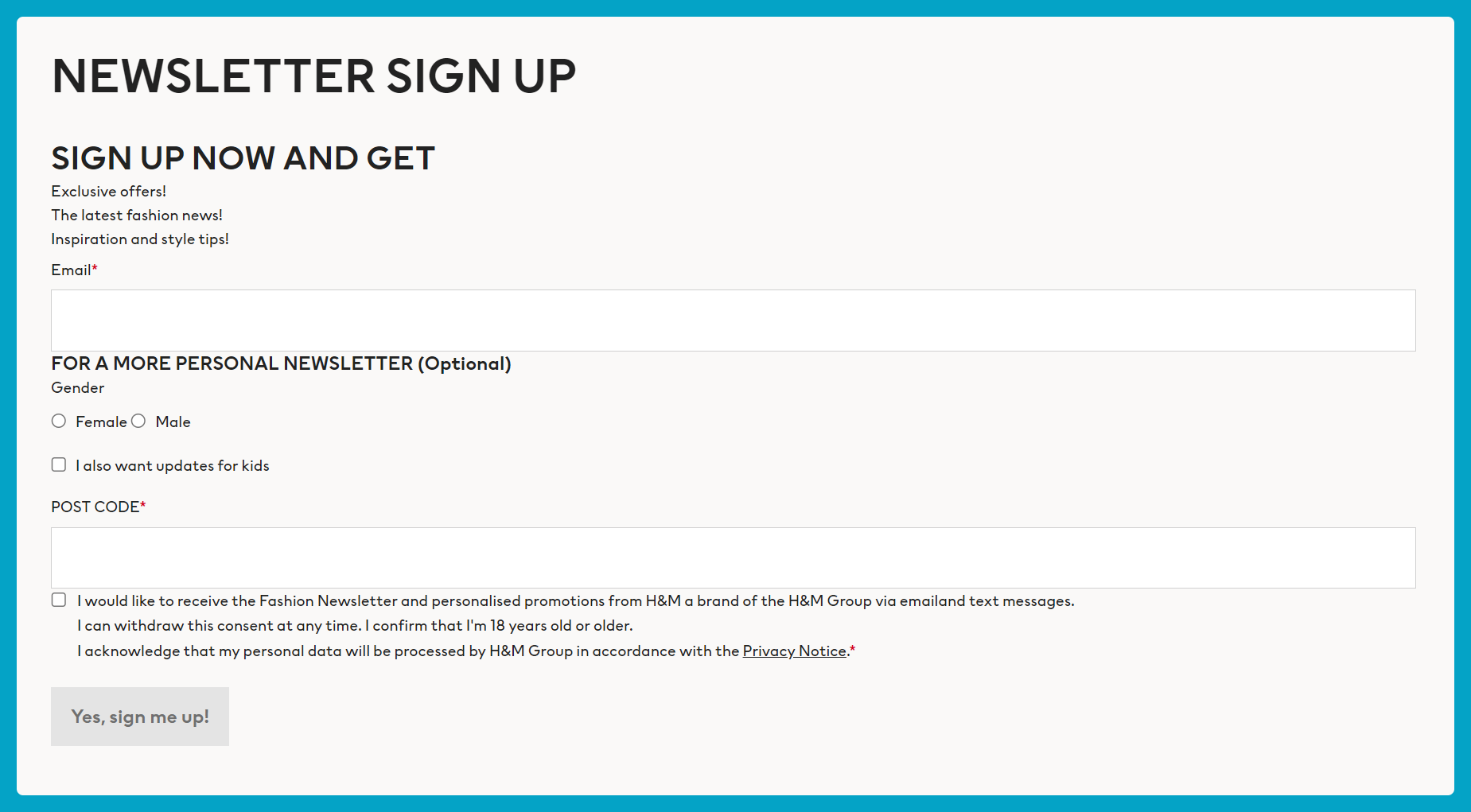
Tips for permission-based email marketing
There are a few things you can do to make permission-based marketing even better. Follow these tips:
Never buy email lists
With purchased lists, you send unsolicited emails, which are often seen as spam emails. People on these lists didn’t ask for your emails, so they’re unwanted emails.
It can upset email service providers and harm your sender reputation. Emails from a bought list often end up in the spam box.
On top of that, sending to these lists can violate the CAN-SPAM Act and other anti-spam laws. It’s better to grow your list organically to avoid these issues.
📚 Learn what happens after buying email lists.
Use double opt-in
You send a double opt-in email with a confirmation link when someone signs up using your signup forms.
This is a two-step subscription process that ensures that the subscriber wants your emails. It’s getting express consent, which is much better than just assuming implicit permission.
It keeps your email list clean and guarantees you’re not accidentally stepping into illegal territory based on permission without clear confirmation.
Look at what it may look like ⬇️
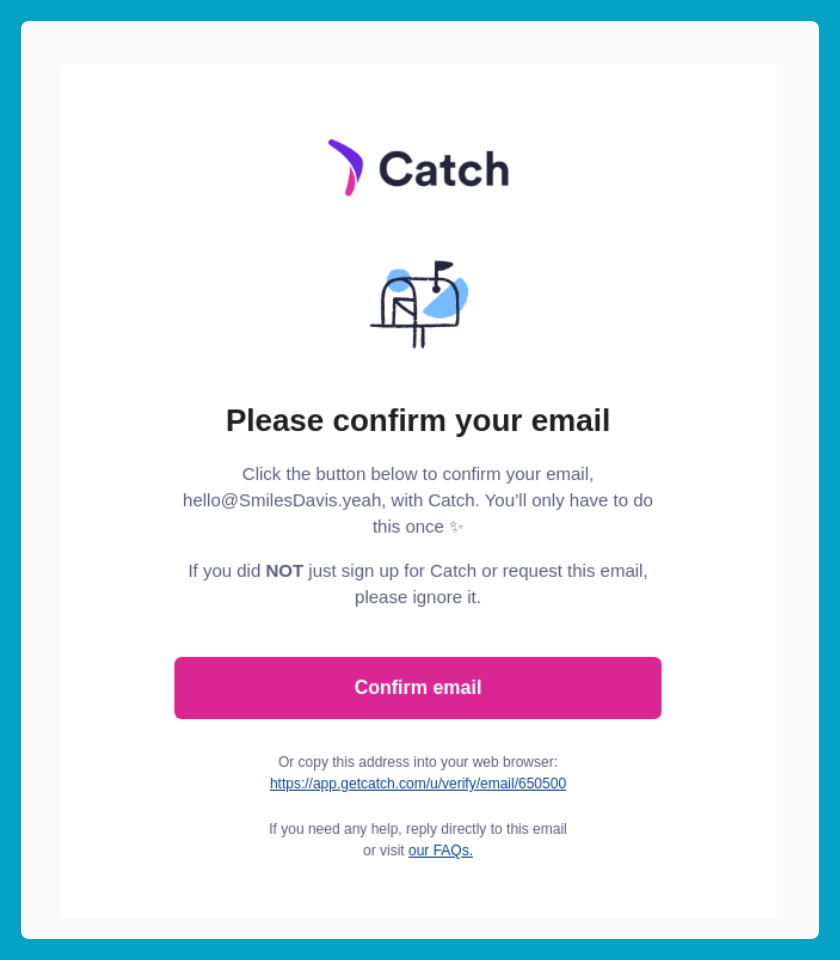
And here is a template that you can use when sending commercial emails and not only:
You’re almost in! We just need a quick nod from you to make it official.
Click here and you’re done:
Yes, I’m In! (your confirmation link or button)
Once you confirm, you’ll be all set to receive:
[Briefly list the types of emails they’ll receive, e.g., updates, tips, offers]
If you didn’t sign up for this, you can safely ignore this email, and we won’t send you anything else.
Make the unsubscribe button extremely easy to find
For recipients, it respects their choice and shows that you value their consent and want to maintain good customer relationships.
As long as subscribers can easily opt out, your email list will be filled with people interested in your emails. It may boost the quality of your email subscribers and the effectiveness of your follow-up emails.
Here’s an example of an unsubscribe button that is easy to link. You can also include an unsubscribe link if you prefer to.
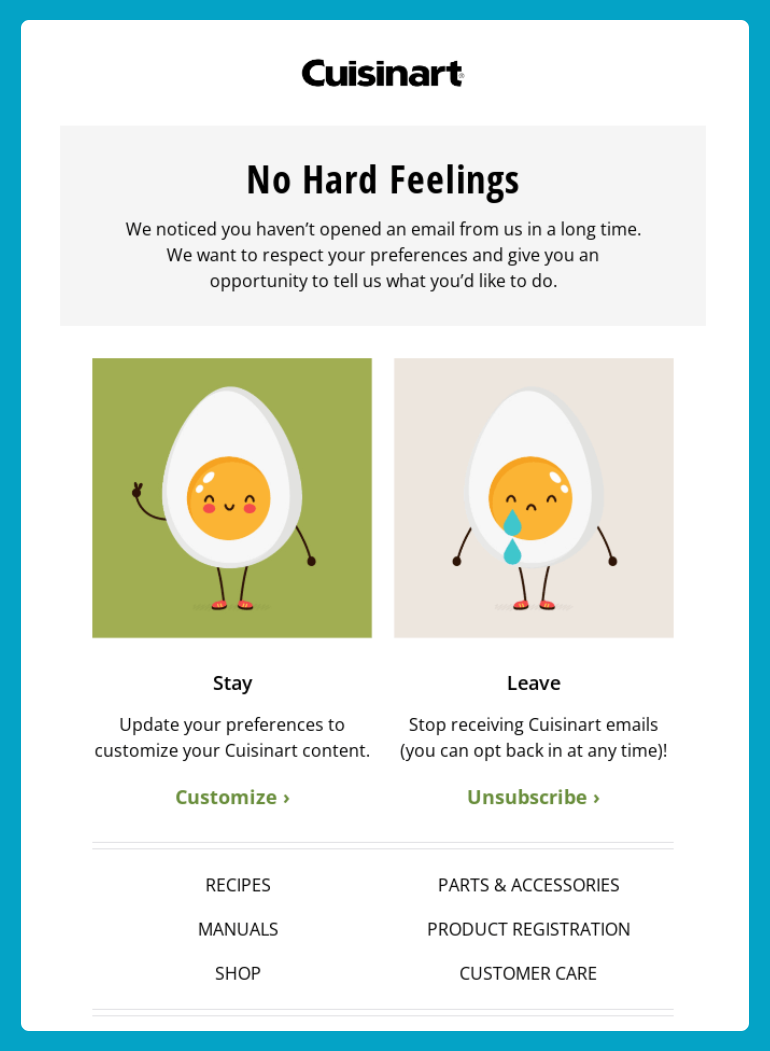
Explain what your subscribers can expect
Be honest with your subscribers and let them know what they can get from you – what kind of emails and how many of them.
Will they receive marketing messages weekly, or maybe monthly updates? Will it be commercial emails, product updates, or maybe some IT news?
Subscribers appreciate knowing what they’ve signed up for, which reduces surprises and chances of them giving up on getting your messages.
It doesn’t have to be long, just a brief information is enough:
We’re excited to have you on board. Here’s what you can expect from us:
- Weekly tips – every Tuesday, we’ll send you top tips and tricks related to [your industry/service].
- Monthly newsletter – on the first Friday of each month, catch up with our latest news, special offers, and insights.
- Exclusive deals – occasionally, we’ll share exclusive promotions and discounts just for our subscribers!
Stay tuned, and thank you for joining us.
Send only relevant content to your subscribers
Your marketing messages, whether they are marketing emails/promotional emails/updates, should always offer valuable content.
Focus on targeted content, and connect better with your audience. Relevant messages show that you understand and cater to their interests. This strategy not only makes your communications more successful but also strengthens the bond with your subscribers, making each email more impactful.
📚 Check out the most important email engagement metrics for campaigns.
When creating an email campaign, pack your message with relevant info only. Take a look at this example – the email is informative, without any unnecessary content.
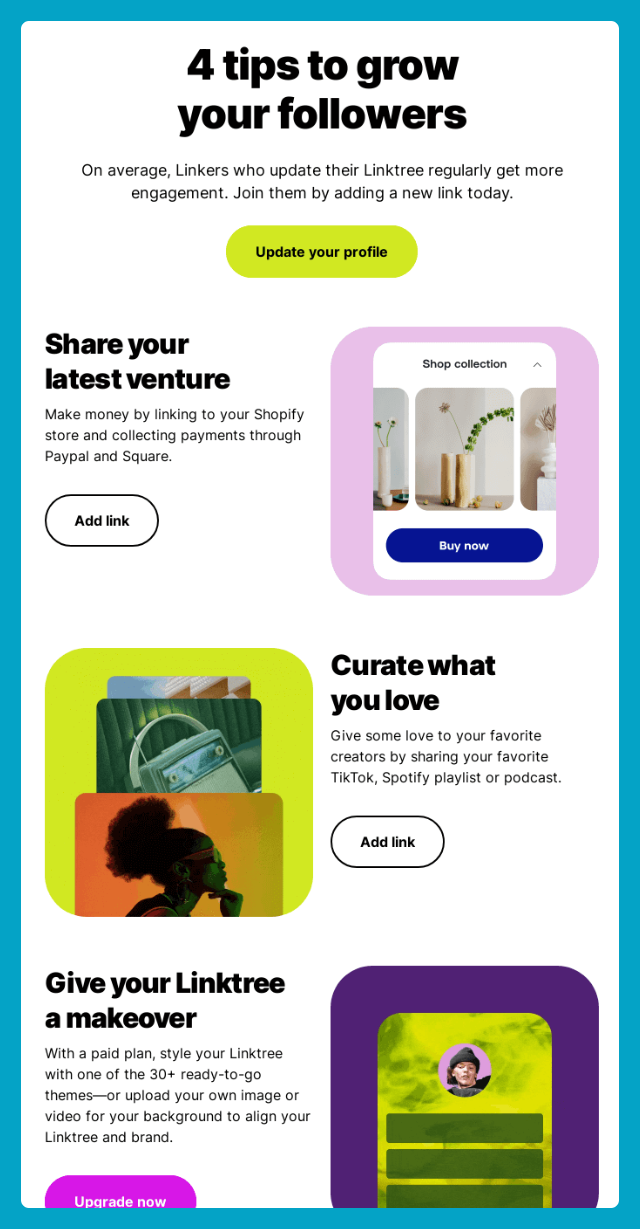
Segment your lists and personalize your emails
It is a great tip for optimizing your email marketing efforts. Group your subscribers based on their interests or behaviors to send more customized messages in your email marketing campaign.
Subscribers get emails that matter to them, so there might be a good chance they’ll engage with your content and boost your website traffic. For the sender, it could mean better response rates and more productive use of resources in your permission marketing strategy.
Check out these great personalized email marketing examples.
#1 Using subscribers’ names:
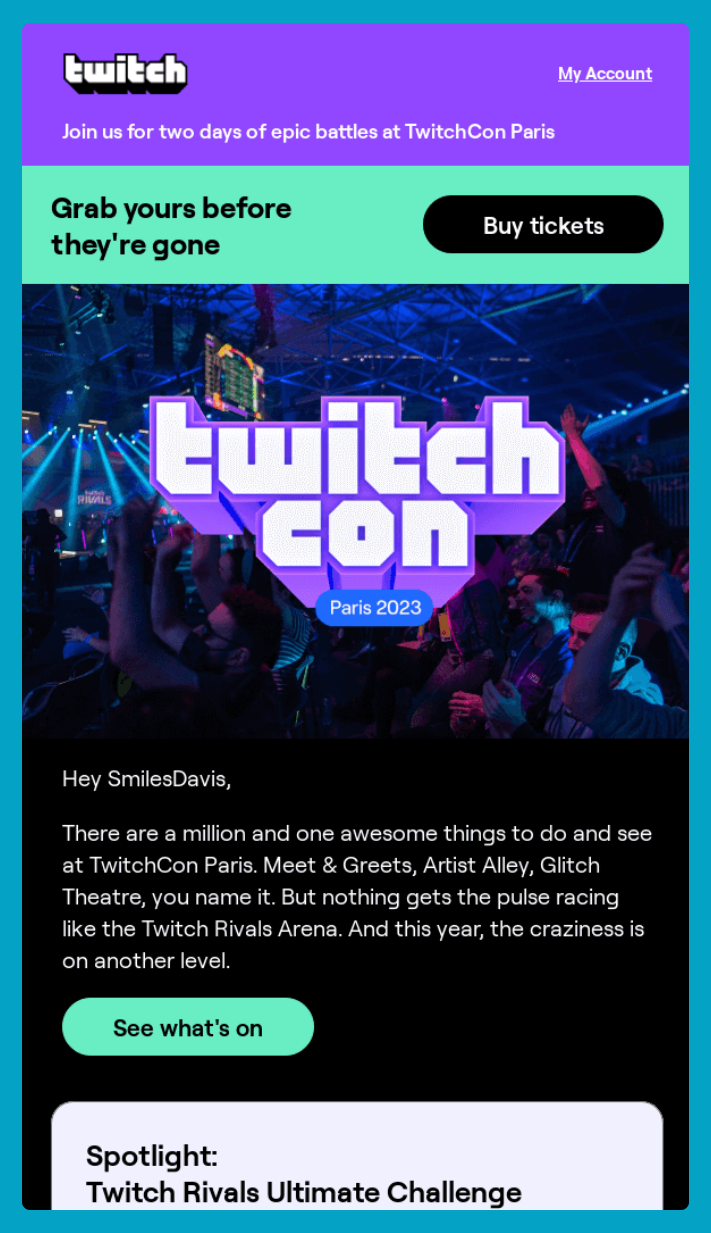
#2 Outlining how a subscriber engaged with your service or product. Here’s a form of a wrap-up:
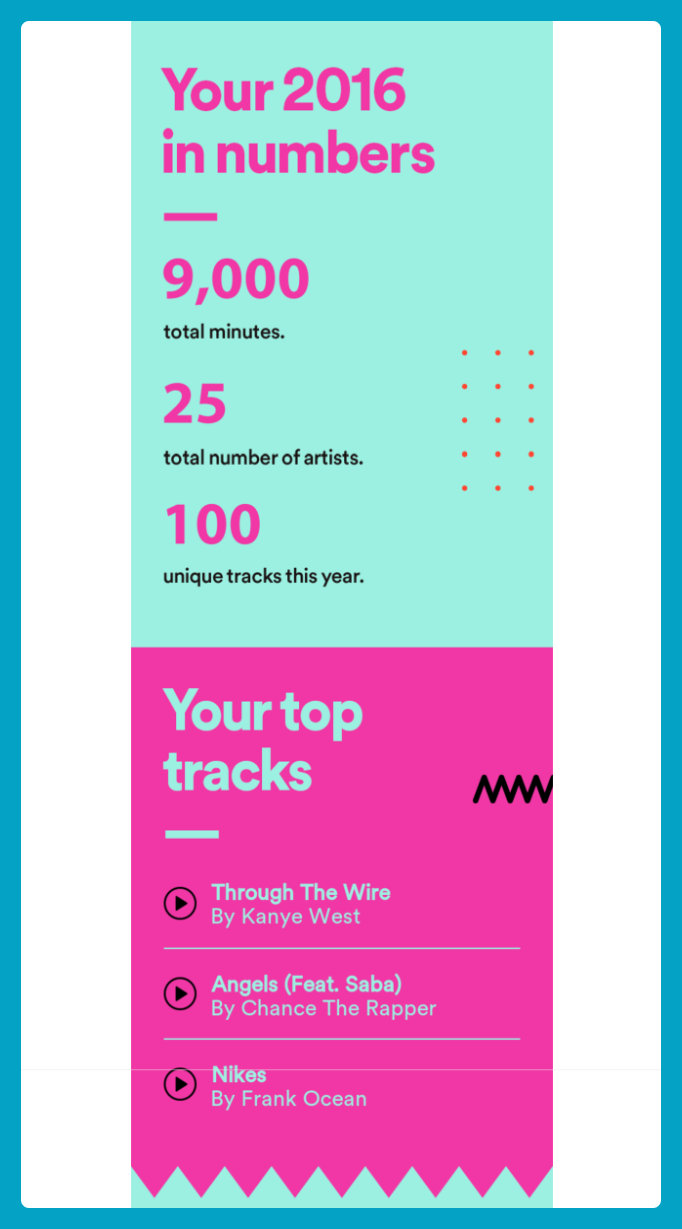
Sending permission requests via email
Sending a permission request via email can be a bit of a gray area and depends on the legal framework of the region in which you are operating, and how you got the email addresses in the first place.
In many jurisdictions, particularly under the GDPR in the European Union and similar laws, when sending an email to ask for permission to send further marketing emails could be considered a breach of regulations.
But, if you already have a relationship with the recipient (for example, they are an existing customer or have previously engaged with your services), and you have collected their email in that context, it might be acceptable to send such a permission request.
Even then, make sure that:
- In the email, you state who you are, why you are contacting them, and what kind of content you will send in future emails.
- The recipients should not be automatically opted into your mailing list – they should make an active choice to subscribe.
- Provide a simple way for recipients to decline or unsubscribe, even when requesting permission.
GDPR vs. CAN-SPAM Act
Regulations between the US and the European Union are not the same. See how they differ:
GDPR (European Union)
Under the GDPR, you need explicit consent to email individuals within the EU. You cannot use pre-ticked boxes or ambiguous language when asking for consent.
Provide specific and informed consent options and be transparent about why data is collected, how it’s used, and any third parties involved.
You also need to offer a clear method for individuals to withdraw their consent at any time.
CAN-SPAM Act (United States)
The CAN-SPAM Act is more lenient regarding consent, as it doesn’t require prior consent for sending commercial emails.
However, it does mandate that emails should not have misleading or deceptive subject lines or content.
You must include a valid physical address, provide an easy way for recipients to opt out of future emails, and honor opt-out requests within 10 days.
What to do before launching your email marketing campaign?
This is a quick checklist for you so that you won’t forget anything important. Modify it if you feel like it:
- Check the laws about email marketing in your area.
- Create a sign-up form for your website.
- Make the sign-up process clear and simple.
- Offer a clear option for people to give permission.
- Use double opt-in for extra confirmation.
- Explain what type of emails they will receive.
- Keep a record of how and when people give permission.
- Make it easy to unsubscribe at any time.
- Regularly update your email list, and verify the addresses.
- Respect privacy and handle data securely.
- Test your email campaign before sending it out.
- Always be honest and transparent with your subscribers.
For email list verification, use Bouncer. You can check the addresses in a blink of an eye. It’s GDPR-compliant and SOC2 ready.
➡️ See API Email Verification.
Conclusion on permission marketing
Obtain permission and send your subscribers amazing email marketing campaigns that people find useful and enjoyable.
Double-check what’s allowed in your region, and stick to the rules.
Have you got the permissions and want to verify the email addresses on your list? Use Bouncer! Sign up and verify your first 100 addresses for free.


